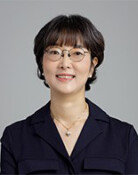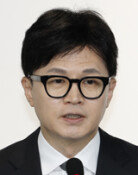Samsung and Intel
Samsung and Intel
Posted January. 06, 2018 07:35,
Updated January. 06, 2018 08:09
“Hurray!” It was December 1983. A man wearing a white gown ran out from a laboratory while shouting in excitement. Shabby-looking people around him hugged each other and started crying. They were research crew led by Dr. Lee Sang-joon working for Samsung Semiconductor and Telecommunications, which later merged with Samsung Electronics. Dr. Lee and his research team worked tirelessly throughout the days and nights for six months with chips given by a U.S. company, Micron, and became the third team to develop 64K DRAM in the world. The news shocked the global semiconductor community, because it took only six months for Korea, while Japan, with much advanced technology and suitable environment, spent six full years.
Samsung Electronics purchased Korea Semiconductor in 1974 and started the semiconductor business. Amid growing concerns over capital impairment by Korea Semiconductor, Samsung Group founder Lee Byung-chul made a “Tokyo Declaration” in February 1983 and announced his full commitment to the semiconductor business at a company-wide level. The global community’s reaction was cold and heartless. Intel dismissed Lee’s pledge as delusions. Lee was 74 years old. By that time, one semiconductor production line cost 940 million U.S. dollars. Lee decided to cross the Rubicon with all of his fortunes.
Global market research firm Gartner reported on Friday that Samsung beat Intel to become the top player in the global semiconductor market with its sales amounting to 61.2 billion dollars last year. Samsung has transformed itself in the memory semiconductor market from late comer to first mover through bold and aggressive investments. Samsung’s semiconductor products have been flying off the shelf with the advent of the mobile age after the computer age.
British technology news and opinion website The Register reported on Tuesday that fatal flows were discovered at Intel processors, which have been sold worldwide for the last 10 years. These flaws give ways for hackers to break into computers and steal personal information. According to follow-up reports, Intel acknowledged the flaw in June 2017 but tried to cover it up. Intel has secured the top position in the global semiconductor market since 1992. However, Intel finally stepped down from the top spot due to its carelessness to risks while being unchecked. Samsung is a new top player now in the market. It seems the most opportune moment to remind the company of “risk theory” by Samsung Group Chairman Lee Kun-hee, who once said to “change everything but your wife and child.”







